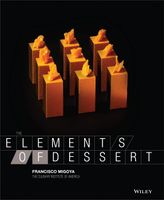🔥 Try our grilling cookbooks and save 25% on ckbk membership with code BBQ25 🔥
The Chocolate Tempering Method
Published 2012
The science behind tempering chocolate and chocolate in itself can be confounding, not to mention extensive. In this section, the information is limited to an explanation of the procedure for tempering dark, milk, and white chocolate using the seeding method. It is not relevant to explain all the methods (tabling, mechanical, ice water bath, microwave, and the use of cocoa butter powder) that are used to obtain the same result. In any method, the three most important factors are time, temperature, and agitation. Time is important because the faster you can take your chocolate from melted to set, the shinier it will be, and it will also have a better snap. When the process takes too long, especially if it takes too long to set after it has been tempered, it may yield a dull, soft chocolate that may even bloom. Temperature is important because the chocolate has to be taken up to a certain temperature, then down, and then up again in order to produce a properly tempered chocolate. When those temperatures are not respected, the chocolate will not be properly tempered. And finally agitation is important, because it helps promote the proper crystallization of fats. The fat in chocolate (cocoa butter) can crystallize in six different forms:
Become a Premium Member to access this page
Unlimited, ad-free access to hundreds of the world’s best cookbooks
Over 160,000 recipes with thousands more added every month
Recommended by leading chefs and food writers
Powerful search filters to match your tastes
Create collections and add reviews or private notes to any recipe
Swipe to browse each cookbook from cover-to-cover
Manage your subscription via the My Membership page
Part of
Advertisement
Related Recipes
-
-
-
-
Related Reference
-
-
-
-
Advertisement



